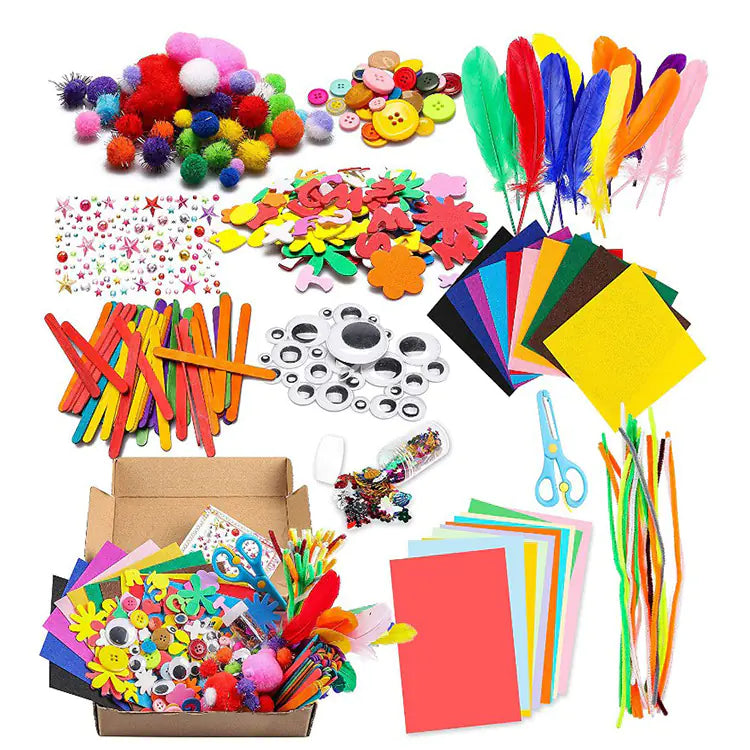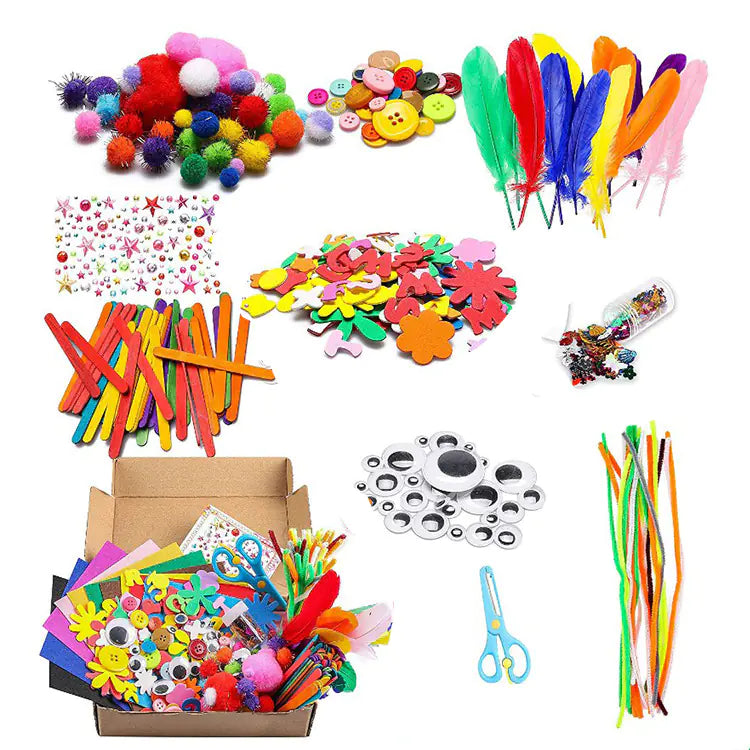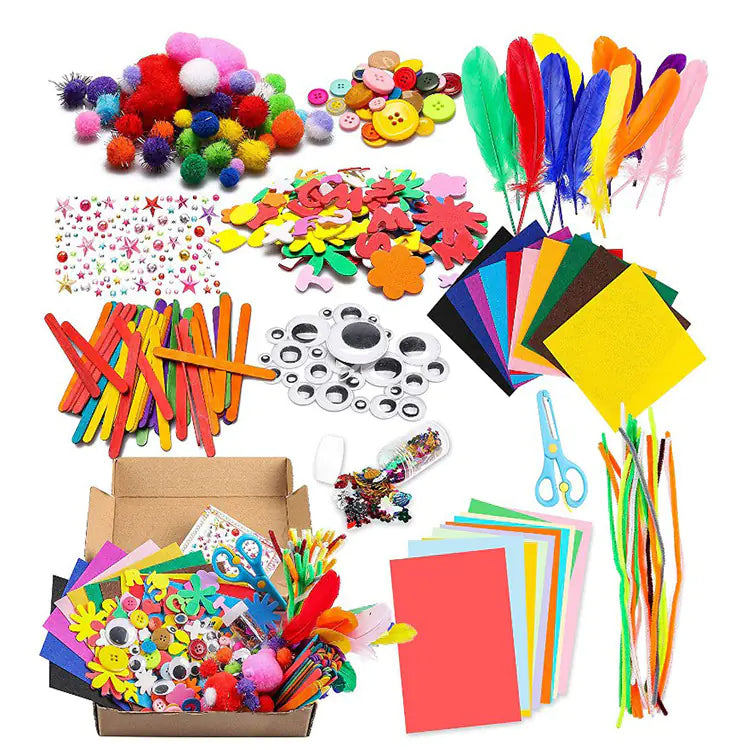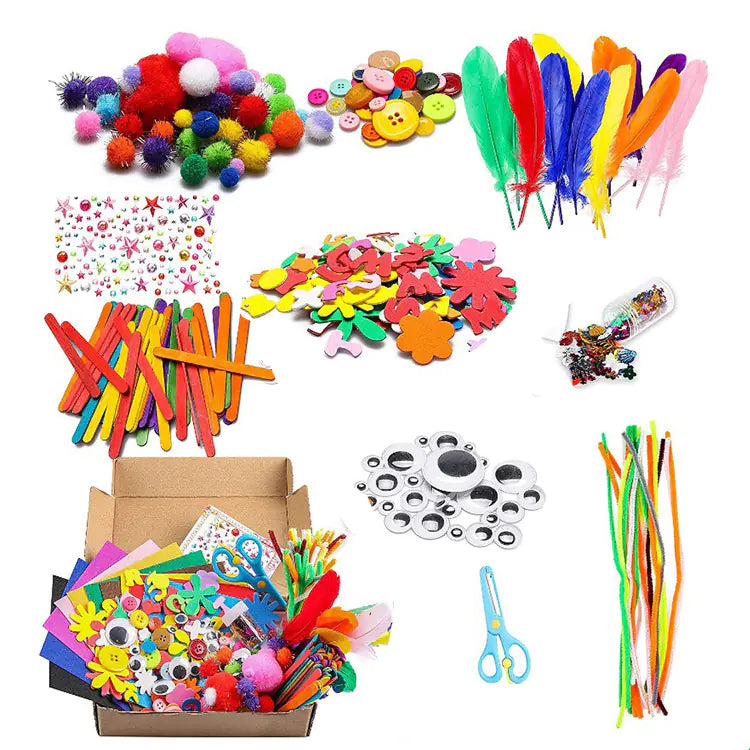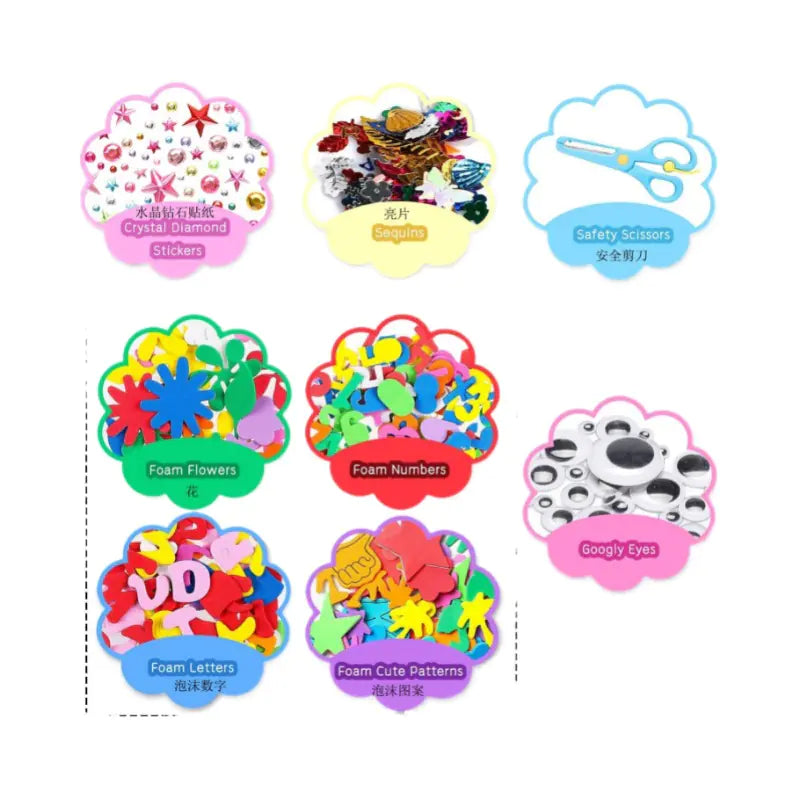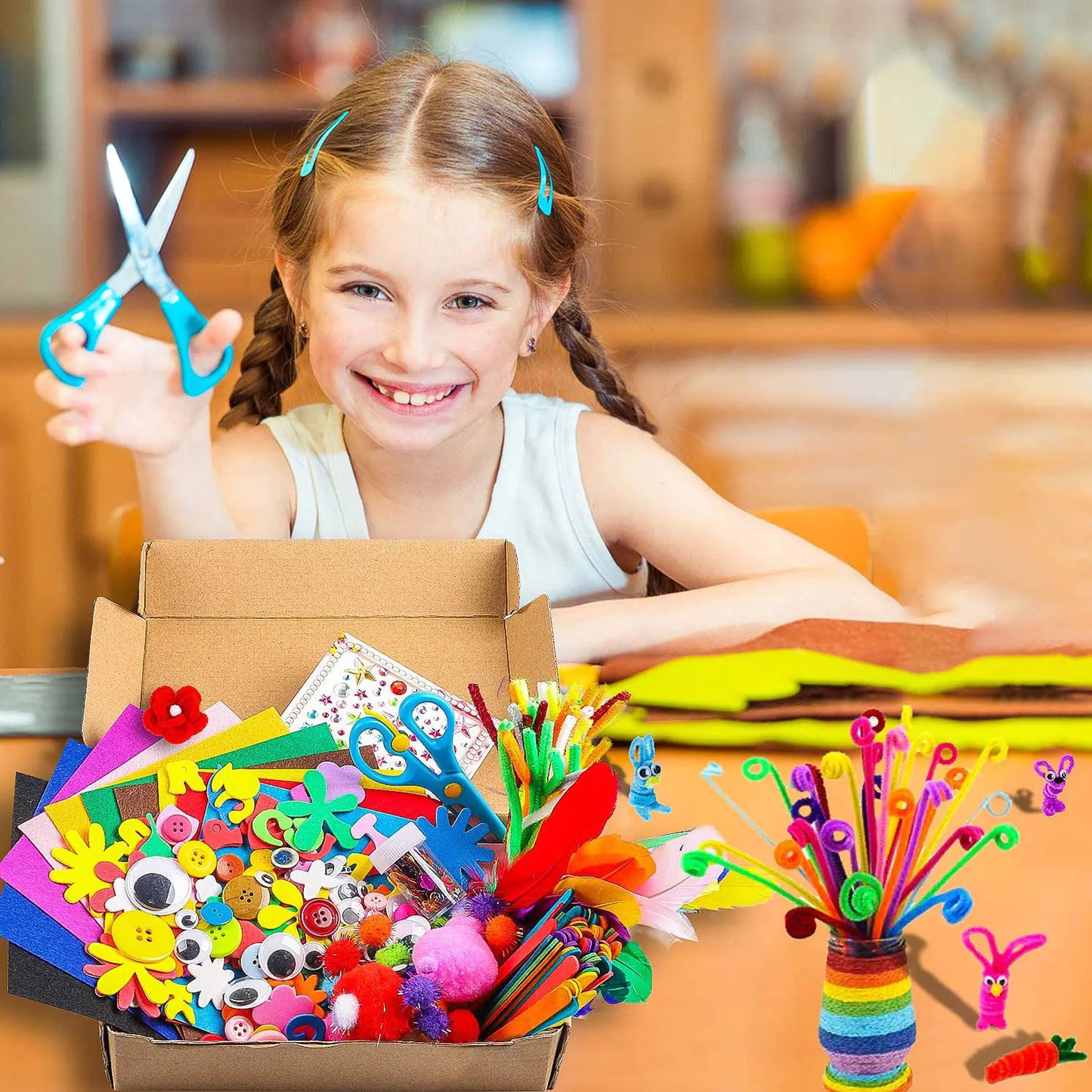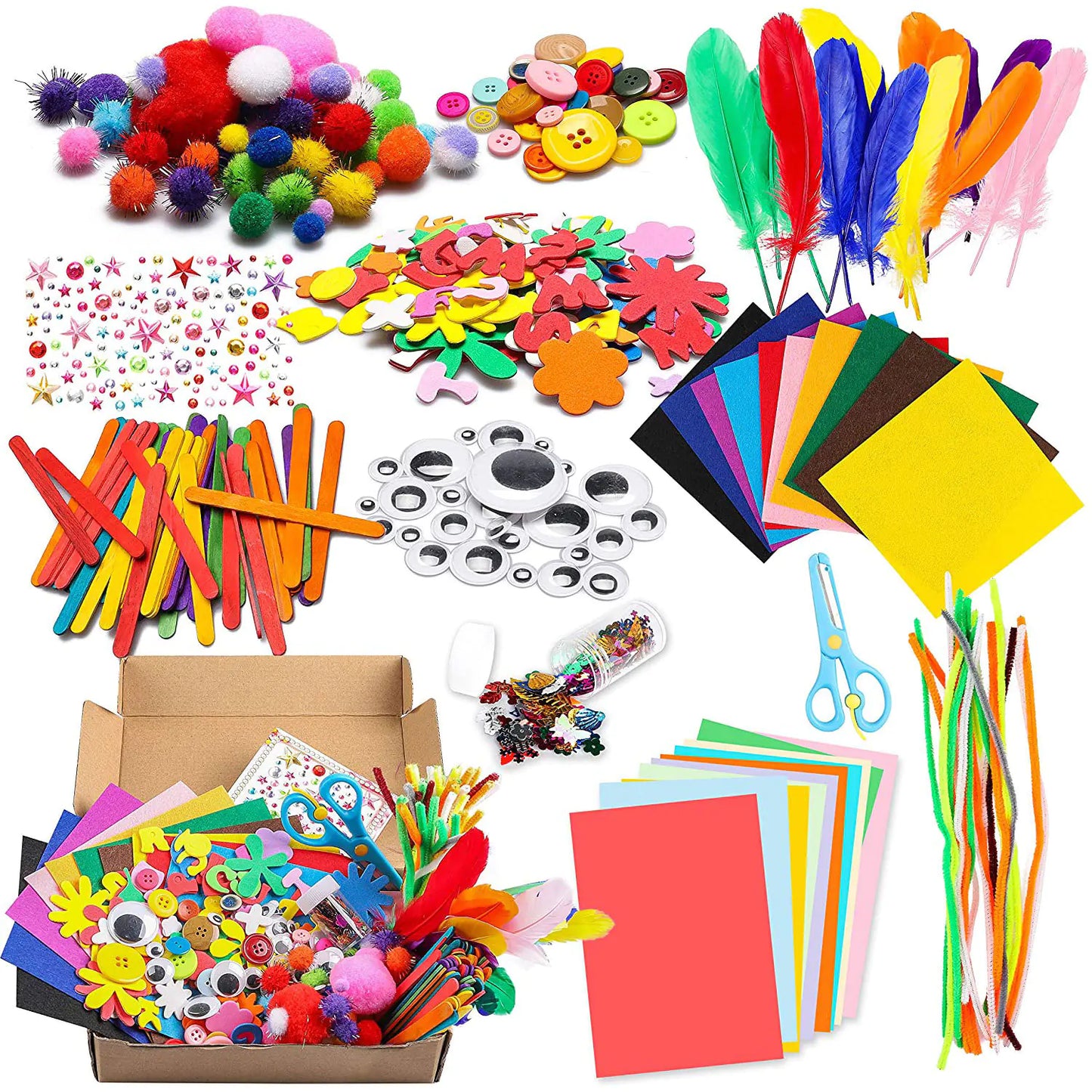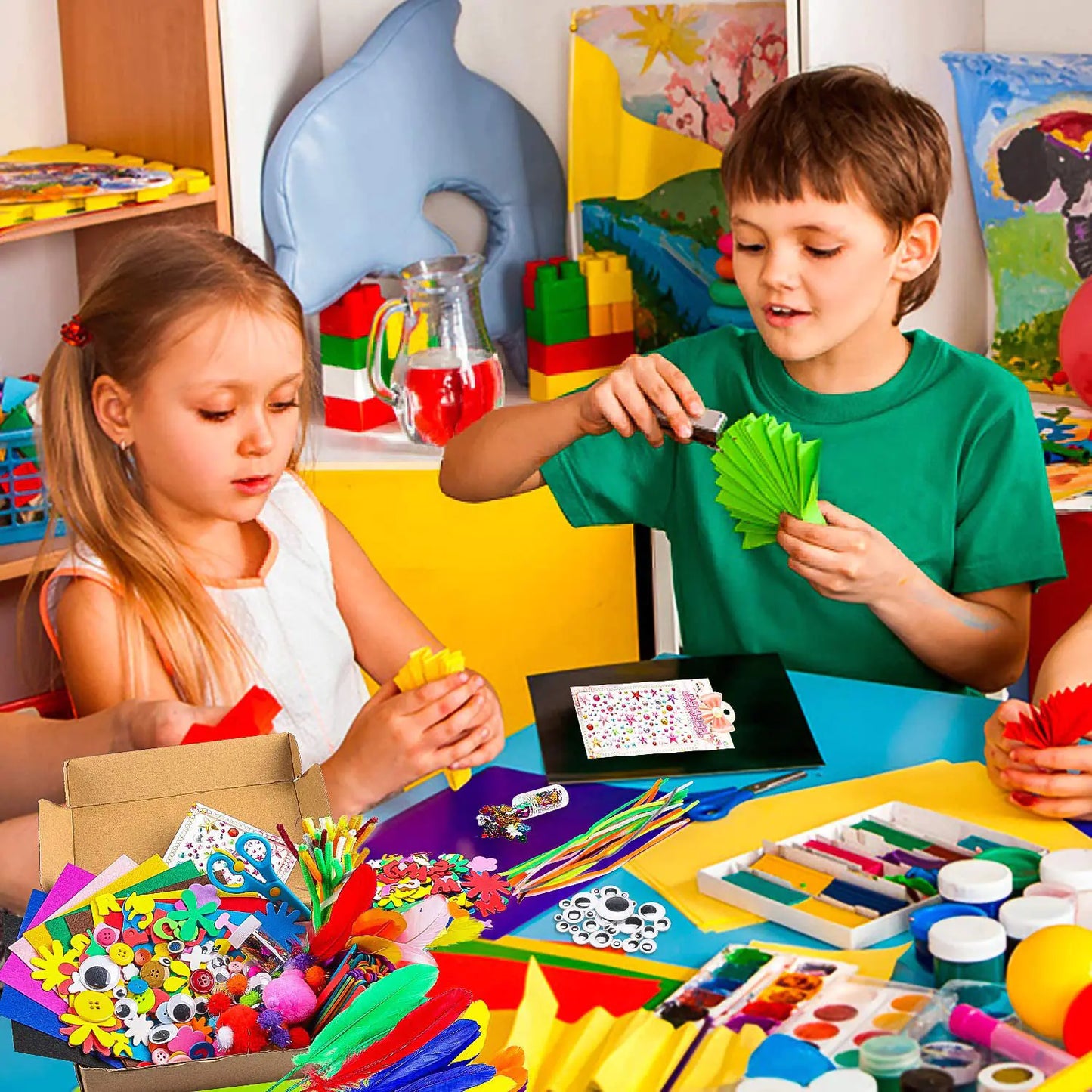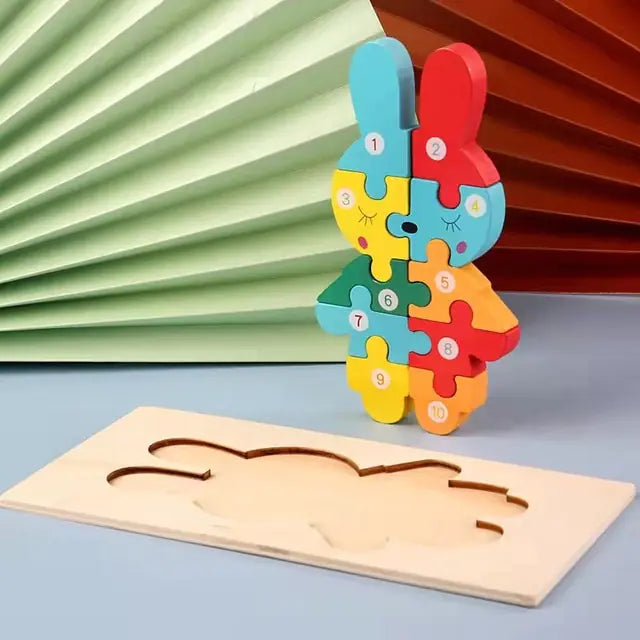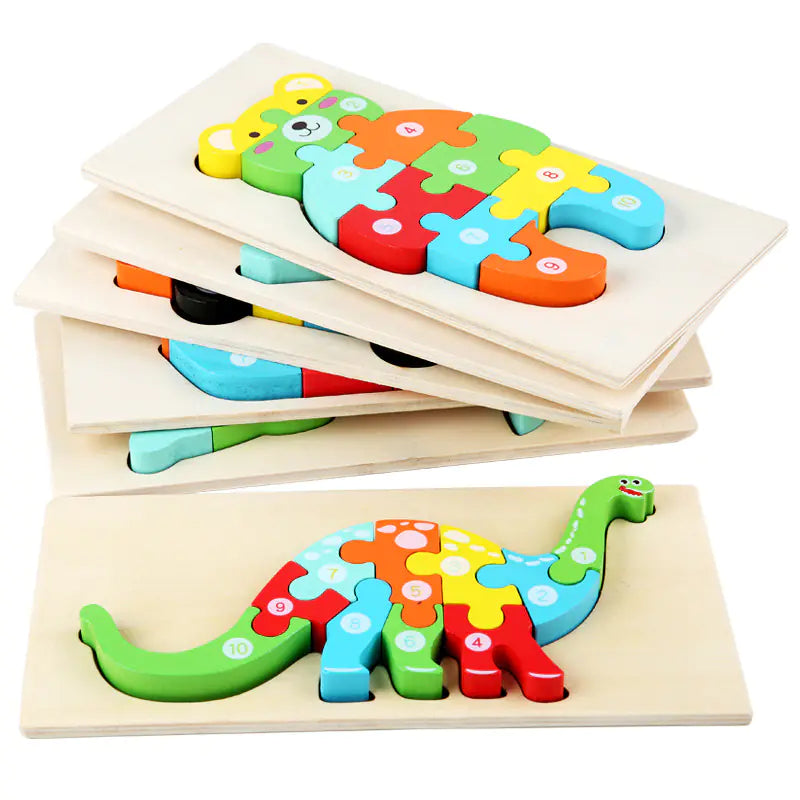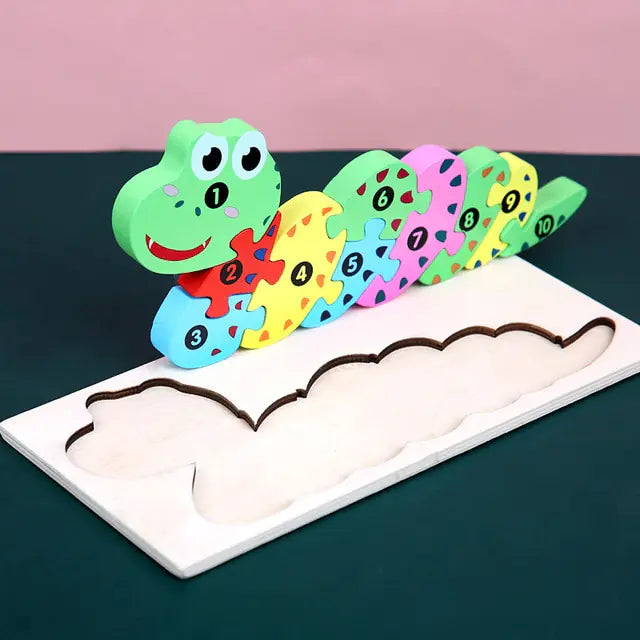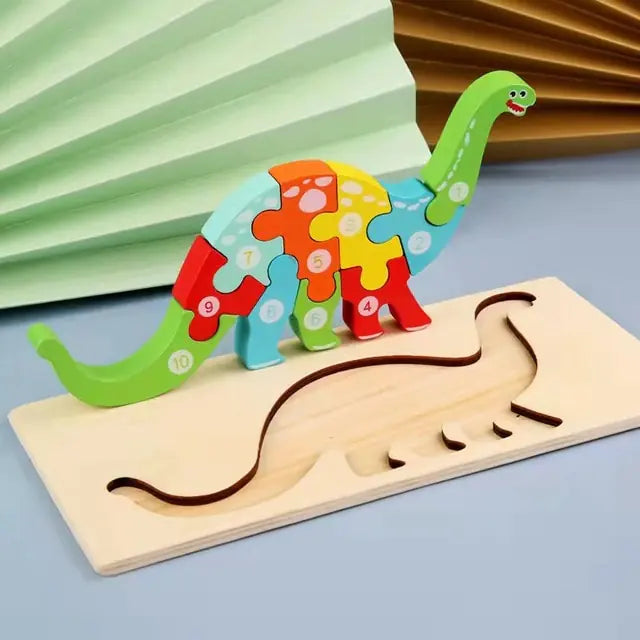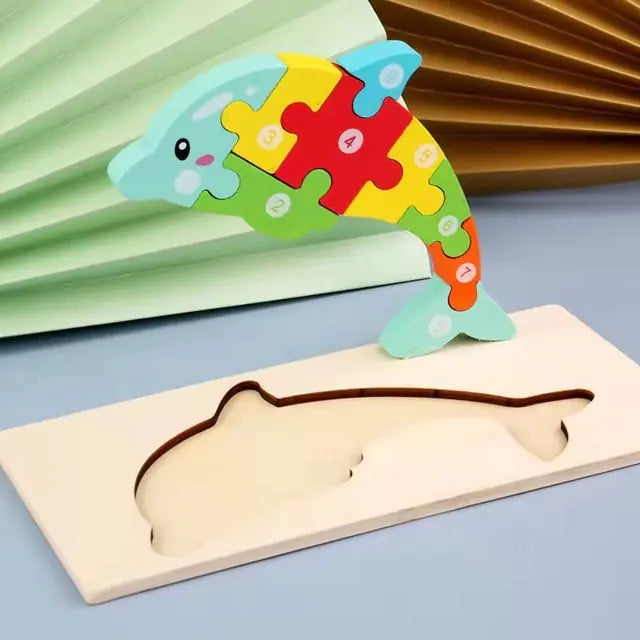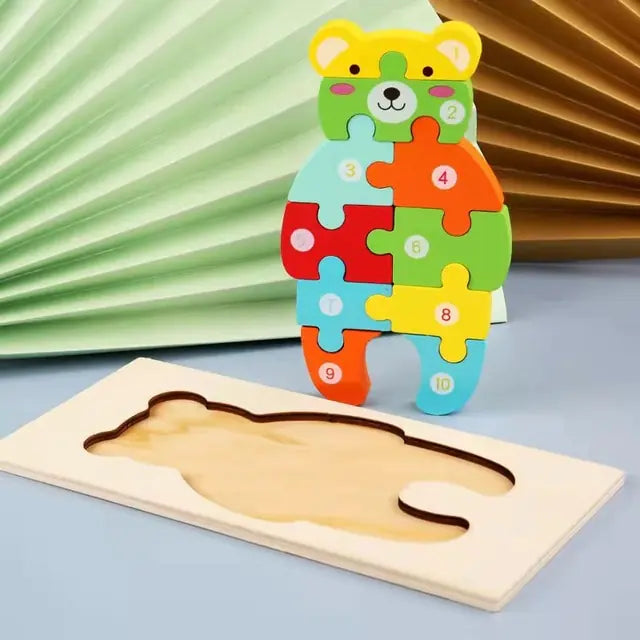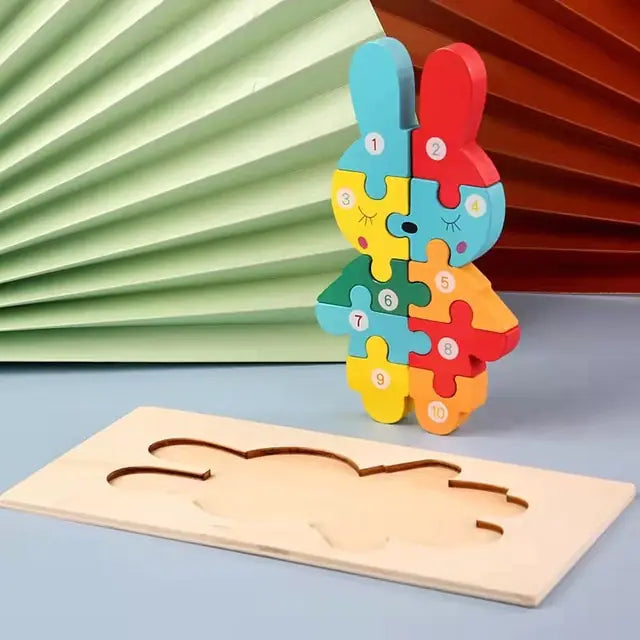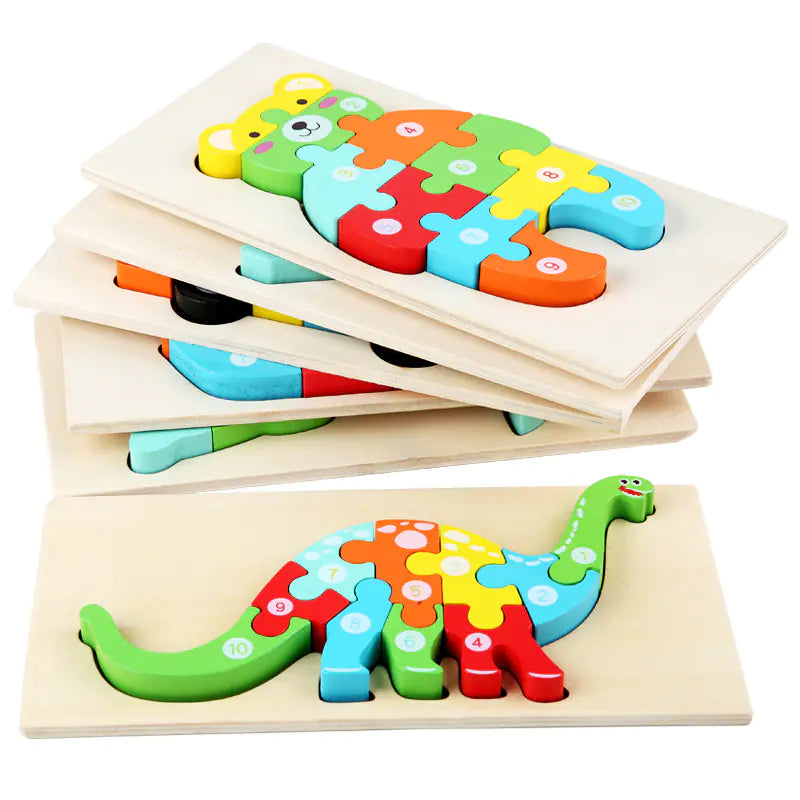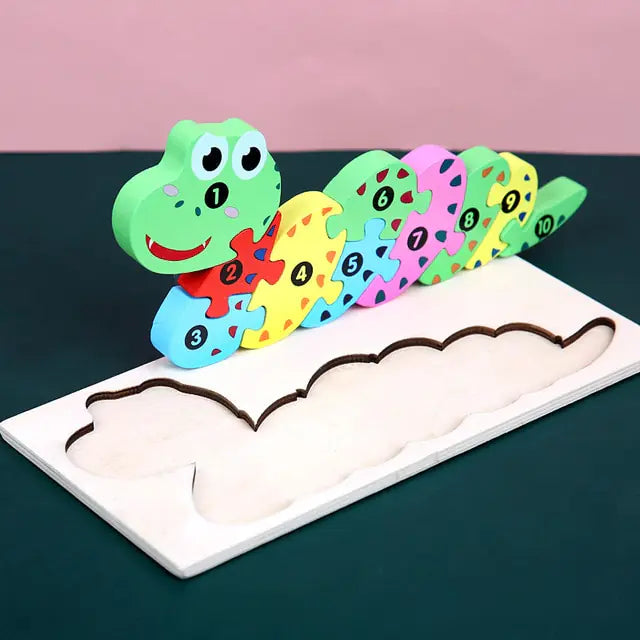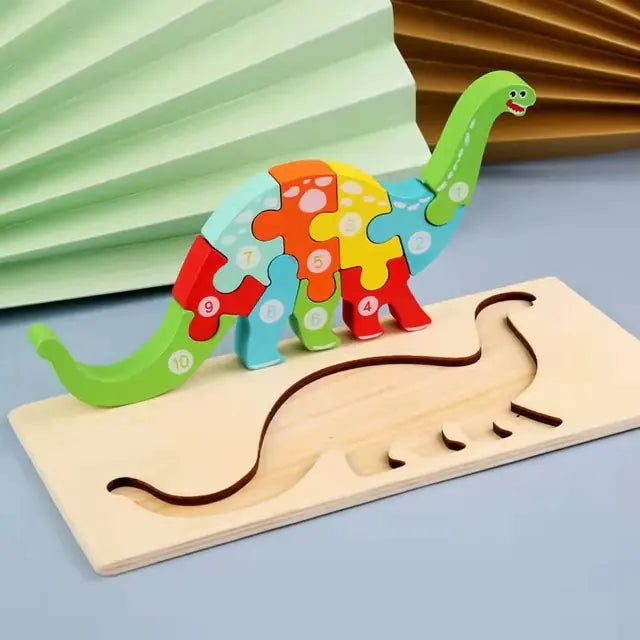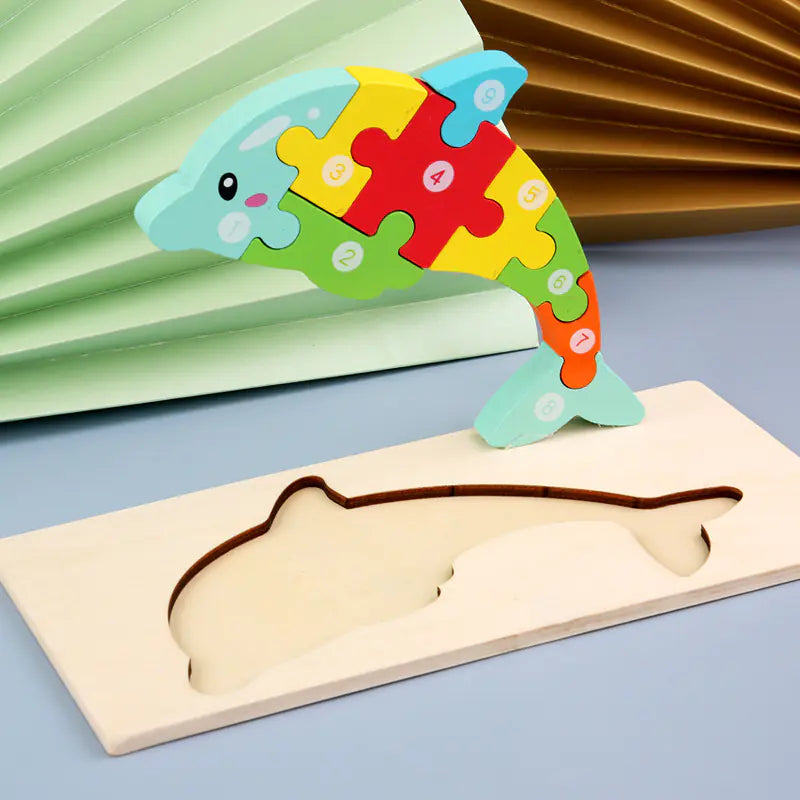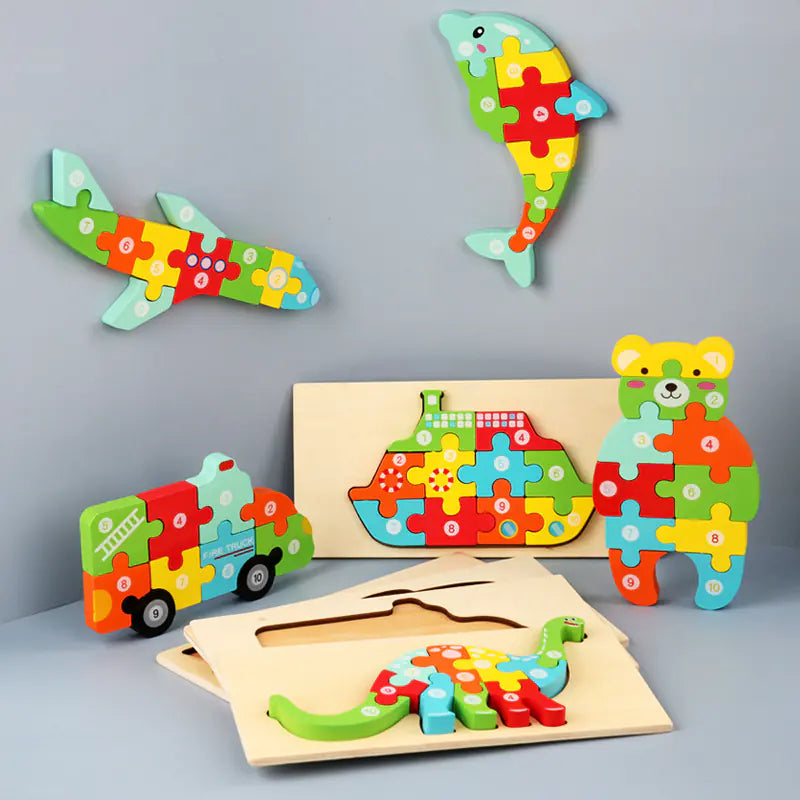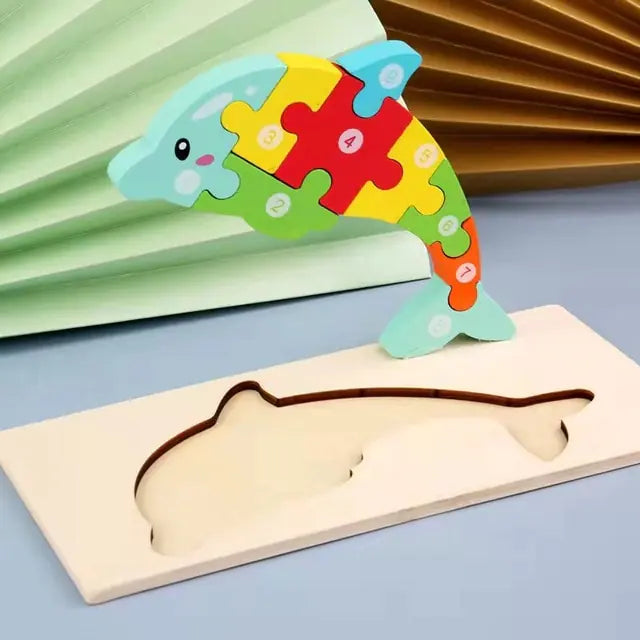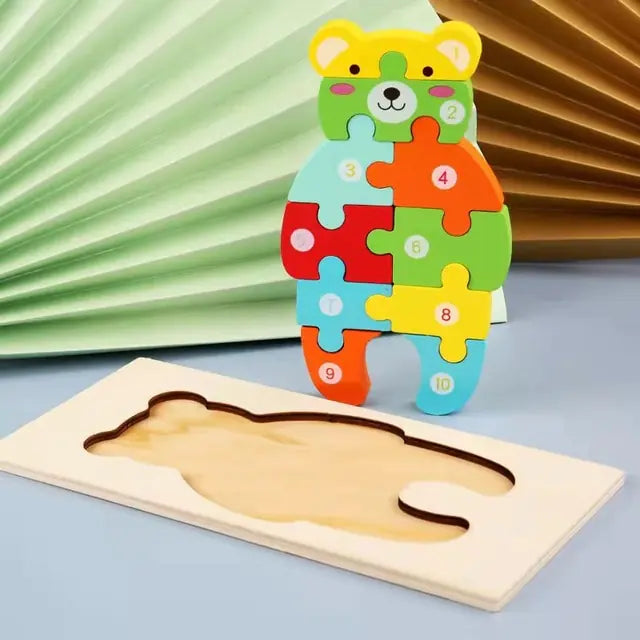In today's dynamic classrooms, learning toys have emerged as powerful tools for enhancing group activities and fostering essential skills among students. These toys are not just for individual play; they can create interactive, collaborative, and engaging learning experiences that benefit the entire class. This article explores various strategies for utilizing learning toys in group settings, ensuring that every child reaps the educational and developmental rewards of play.
Unlocking Group Dynamics with Learning Toys

Fostering Teamwork Through Play
I've always believed that play is where children learn the art of being together. Choosing suitable toys is crucial for kids' development, fostering teamwork, sharing, and social skills. Toys aren't just for fun; they're the tools that teach patience, perseverance, and collaboration, laying the foundation for essential life skills.
When I think about the toys that have made the biggest impact, I'm reminded of a few favorites:
- Building Blocks: Perfect for cooperative construction projects.
- Board Games: They require players to work as a team to win.
- Puzzle Sets: Kids come together to solve a common challenge.
Active play toys, like balls and jump ropes, also play a pivotal role in teaching lessons in teamwork and sportsmanship. They can be used in various games, from simple skipping contests to more structured team sports. And let's not forget dress-up clothes, which allow kids to explore roles and stories together, enhancing their creativity and empathy.
Remember, the goal is to create an environment where every child feels included and valued, and where learning to work together is part of the fun.
Encouraging Healthy Competition
I've seen how suitable toys can turn a competitive spirit into a powerful learning tool. Healthy competition among students doesn't just push them to do better; it teaches them about fairness, respect, and the value of effort. Here's a quick list of benefits that come from encouraging competition through learning toys:
- Motivation Boost: Kids strive to improve when they see their peers succeeding.
- Goal Setting: They learn to set and achieve personal and group goals.
-
Resilience: Losing isn't easy, but it's a chance to learn and bounce back stronger.
Remember, the goal isn't to win at all costs; it's to foster a love for learning and self-improvement. By carefully selecting toys that promote healthy competition, we can help children develop a positive mindset towards challenges and achievements.
Building Communication Skills
Regarding group activities in the classroom, I've seen firsthand how learning toys can be a game-changer for building communication skills. Take puzzles, for example. They're not just a fun challenge but a way to get kids talking, sharing ideas, and working together towards a common goal. It's more than finding the right piece; it's about finding a way to connect.
Puzzles encourage students to articulate their thoughts, ask for help, and offer guidance to their peers. Here's a quick list of the benefits I've observed:
- Enhanced vocabulary as kids describe shapes, colors, and actions
- Improved patience and listening skills while collaborating
- The joy of shared success when the puzzle is completed
Remember, the goal isn't to finish first, but to finish together. Fostering an environment where every voice is heard and valued is key to developing strong communication skills in our kids.
Creative Play: A Pathway to Learning

Integrating Toys with Curriculum
I've always believed that learning should be fun, and what better way to make it so than by integrating toys with the curriculum? Toys are not just playthings; they're teaching tools that can help children grasp complex concepts more engagingly. For instance, using building blocks during math lessons can turn an abstract idea into a hands-on experience, making it easier for kids to understand and retain the information.
Here's a simple approach I use to blend toys with learning:
- Identify the learning objective: What concept or skill do you want the children to learn?
- Choose the suitable toy: Select a toy to help tangibly illustrate that concept.
- Create a lesson plan: Develop activities that use the toy to teach the lesson.
- Engage the children: Let them explore and learn through play, guiding them as needed.
-
Reflect and discuss: After the activity, talk with the kids about what they learned and how the toy helped.
By using toys as educational tools, we can transform classrooms into vibrant hubs of creativity and collaboration, promoting social skills, emotional intelligence, and cognitive development through play-based learning.
Remember, the goal is to make learning an adventure that children are excited to embark on daily. With suitable toys integrated into your lessons, you're not just teaching; you're inspiring a love for learning that can last a lifetime.
Stimulating Imagination and Creativity
Watching kids play, I'm always amazed at how a simple toy car can become the star of a high-speed chase or how a set of blocks transforms into a grand castle. Imagination turns the ordinary into the extraordinary, and that's the beauty of learning toys. They're not just playthings but the keys to unlocking a child's creative potential.
Toys encourage imagination and help kids explore and experiment in ways that structured activities can't. They learn to think outside the box, solve problems creatively, and express themselves through storytelling. Here's a quick list of benefits:
- Fosters independence and a sense of agency
- Encourages problem-solving and critical thinking
- Enhances storytelling and communication skills
Remember, the best toys don't always have the most bells and whistles. Often, it's the simplest ones that spark the most imaginative play. So next time you're toy shopping, think about what will inspire your child to create their own worlds and stories.
Using Pretend Play to Teach Real-World Skills
I've seen firsthand how pretend play can be a game-changer in the classroom. It's not just about donning a cape and pretending to be a superhero—though that's always fun! It's about the real-world skills kids develop while they're lost in their imaginations. Through pretend play, children learn to problem-solve, communicate, and understand the perspectives of others.
Pretend play is a powerful tool for teaching kids how to navigate social situations and resolve conflicts. They get to experiment with different roles and outcomes in a safe and controlled environment.
Here's a quick list of benefits that come from incorporating pretend play into group activities:
- Encourages creative thinking and innovation
- Enhances language and communication skills
- Builds empathy by exploring different roles
- Strengthens problem-solving abilities
Remember, the key is to let their creativity lead the way. As they play, they're not just having fun—they're preparing for the real world in ways we can't always teach with textbooks and lectures.
Active Play: More Than Just Fun and Games

The Role of Physical Activity in Learning
I've always believed that learning isn't just about sitting still and memorizing facts. It's about engaging the whole body and mind. Active play is a crucial ingredient in this mix, and I encourage every parent to incorporate it into their child's learning routine. When kids move, they're not just exercising their muscles; they're also giving their brains a workout.
Here's a quick list of why active play should be a non-negotiable part of our kids' learning:
- Improves focus and attention
- Enhances physical health
- Boosts cognitive development
- Fosters social skills through group activities
Remember, the goal is to blend fun with learning. Encourage group play with engaging outdoor toys, organize playdates for interactive fun, and select educational toys that align with kids' interests to promote learning through play.
Selecting Toys for Maximum Engagement
When I hunt for the perfect learning toy for my kids, I always aim for maximum engagement. It's not just about the flashiest gadgets or the toys with the most bells and whistles. The key is to find toys that resonate with my children's interests and challenge their minds. For instance, open-ended toys like building blocks and art supplies are fantastic because they offer endless possibilities and encourage creative thinking.
Here's a quick checklist I use when selecting toys:
- Does it spark curiosity?
- Can it be used in multiple ways?
- Is it age-appropriate?
- Does it encourage active play?
Remember, the goal is to find toys that will not only entertain but also inspire and educate. It's about striking that perfect balance between fun and learning.
Lastly, I always consider the longevity of a toy. I ask myself, 'Will this toy grow with my child?' In my book, a toy that adapts to their developing skills is a win. It's not just about the immediate joy it brings but its lasting impact on their learning journey.
Balancing Play with Structured Learning
As I've explored the best ways to use toys in the classroom, I've realized it's all about striking the right balance. Structured learning and play can coexist harmoniously, with each enhancing the other. Here's how I make it work:
- Set clear objectives: I define what I want the kids to learn before the toys come out. This could be a math skill, a science concept, or a social skill.
- Choose the suitable toys: Not all toys are created equal. I select ones that align with our learning goals and can be used in a structured way.
- Time it right: I integrate playtime with lesson time, using toys as a hands-on way to reinforce the day's teachings.
-
Guide, don't dictate: I'm there to facilitate, offering suggestions and helping steer the play towards our learning objectives.
Remember, the goal isn't to control play but to infuse it with learning opportunities. When done right, play can become a powerful educational tool, keeping kids engaged and eager to learn.
The Social Side of Play: Learning to Share and Collaborate

Group Games for Social Skill Development
I've seen firsthand how group play fosters essential social skills like sharing, communication, and teamwork. It's not just about having fun; it's about enhancing emotional development in a way that textbooks can't match. Educational toys are a powerful tool in this process, as they provide a hands-on approach to learning how to cooperate, resolve conflicts, and interact with peers—skills crucial for lifelong social growth.
The Name Game is a fantastic ice-breaker for kids at the start of the school year. It's simple, engaging, and an excellent way for kids to learn each other's names and kickstart new friendships. Here's a quick list of some other group games that I've found to be incredibly effective in the classroom:
- Board Games: Games like Candy Land and Chutes and Ladders teach young learners about counting and turn-taking, while Scrabble or Ticket to Ride can boost vocabulary and strategic thinking for older kids.
- Sports Equipment: Jump ropes, balls, and hoops encourage physical activity and lessons in teamwork and sportsmanship.
-
Dress-Up Clothes: Costumes and props allow children to explore different roles, fostering creativity, empathy, and communication skills.
Remember, the goal is to create a playful environment where children feel safe to express themselves and learn from each other. It's about building bridges of connection that support social and emotional development through play.
Sharing Toys: Lessons in Cooperation
I've seen firsthand how sharing toys in the classroom isn't just about taking turns; it's a fundamental lesson in cooperation. When kids share, they're learning to compromise and value each other's experiences. It's about creating a sense of community where everyone has a chance to contribute and enjoy.
Games with rules are a fantastic way to introduce the concept of fairness and sportsmanship among kids. Here's a quick list of benefits that come from sharing toys during playtime:
- Encourages empathy by putting oneself in another's shoes
- Teaches patience as kids wait for their turn
- Fosters a sense of belonging and teamwork
- Develops problem-solving skills during conflicts over toys
Sharing isn't just a skill; it's a bridge to building stronger, more empathetic future adults. And let's be honest, it makes my life a lot easier when the kids play nicely together! Economical for you as parents, too, since you won't need to buy every toy your child clamors for—instead, they learn the joy of shared play with a diverse collection of classroom toys.
Role-Playing Scenarios to Resolve Conflicts
I've seen firsthand how role-playing scenarios can be a game-changer in the classroom. By stepping into someone else's shoes, kids learn empathy and problem-solving in a fun and impactful way. It's not just about winning; it's about understanding each other and finding common ground.
Role-playing toys, like puppets and dress-up costumes, provide a safe space for children to express themselves and explore complex social situations. Here's a quick list of benefits I've noticed:
- Encourages perspective-taking and empathy
- Enhances communication and language skills
- Teaches conflict resolution and negotiation
- Boosts creativity and imagination
Remember, the goal is to guide children towards positive interactions and self-expression. It's incredible to watch them navigate these scenarios and come out with a better understanding of how to work together in harmony.
Educational Toys: Merging Fun with Fundamentals

Choosing Toys for Different Age Groups
When I'm picking out toys for my kids, I always remember that age-appropriate toys are not just safer; they're also key to their development. Too advanced toys might frustrate them, while too simple can lead to boredom. It's all about hitting that sweet spot where play meets learning at just the right level.
For infants and toddlers, sensory toys like rattles and textured balls are fantastic for exploring the senses. As they grow into preschoolers, puzzles and simple board games come into play, enhancing their problem-solving skills and hand-eye coordination. Here's a quick list to guide you:
- 0-2 Years: Sensory toys, soft books, stacking blocks
- 3-4 Years: Puzzles, basic board games, pretend play sets
- 5-7 Years: More complex construction sets, educational electronics
-
8+ Years: Science kits, advanced puzzles, strategy-based games
Remember, the goal is to integrate these educational toys into daily playtime, gently pushing the boundaries of their abilities to foster cognitive development and problem-solving skills.
It's also worth noting that some toys are timeless and can grow with your child. Open-ended toys like building blocks and art supplies can spark imagination at any age. So, don't be afraid to think outside the age bracket if you feel your child is ready for a challenge!
Toys That Teach: From Math to Music
When I think about the toys that have made a real impact in my kids' lives, it's the ones that blend fun with learning that stand out. Toys that teach aren't just about drilling facts; they're about sparking that joy of discovery. Take musical instruments, for example. They're not just about exploring music; they help with rhythm, coordination, and math skills through patterns and counting beats.
Here's a quick list of some educational toys that have been a hit in our home:
- Math & Time Toys: Perfect for turning abstract concepts into hands-on fun.
- Musical Instruments: From simple tambourines to small keyboards, music toys teach more than just tunes.
- Science Kits: These bring the world's wonders into your living room.
-
Art Supplies: Crayons, markers, and clay encourage creativity and improve fine motor skills.
Remember, the best educational toys are the ones that your child is naturally drawn to. They're the ones that they'll come back to time and time again, each time discovering something new.
Assessing the Educational Value of Toys
When I hunt for the perfect learning toy for my kids, I always pause to consider its educational value. It's not just about the bells and whistles; it's about what skills and knowledge my child will gain. Will this toy help my child develop critical thinking or problem-solving skills? That's the golden question I ask myself.
Toys that encourage exploration and experimentation are essential. They should challenge my kids just enough to keep them engaged without causing frustration. Here's a quick checklist I use to assess a toy's educational potential:
- Does it promote creativity and imagination?
- Can it be used in multiple ways or for various games?
- Is it age-appropriate and safe for my child?
- Will it help in developing fine motor skills or coordination?
- Does it align with my child's interests and current learning topics?
Remember, the best toys leave plenty of room for a child's imagination to soar.
Lastly, I look for toys that can grow with my child. A toy that adapts to their evolving skills ensures it won't be forgotten in the back of the closet after a week. It's all about finding that sweet spot where fun meets learning—and trust me, it's worth the search.
The Power of Storytelling in Group Play

Using Puppets and Figures to Weave Stories
I've always been amazed how a simple puppet can turn a shy kid into a master storyteller. It's like magic. When kids slip their hands into a puppet, they're not just playing; they're stepping into a role that lets them express themselves in ways they might not usually feel comfortable doing. Puppets become a voice for their inner thoughts and feelings, and that's powerful stuff.
Imagination takes the lead as children create characters, settings, and plots that are as unique as they are. This isn't just fun—it's a workout for their brains! They're learning narrative structure, expanding their vocabulary, and developing empathy by seeing the world through their character's eyes. And let's not forget the laughter that fills the room when a puppet does something unexpected. That joy is the sound of learning in progress.
Encourage imaginative storytelling and language development in children through puppet play, flashcards for vocabulary growth, and interactive storybooks for engaging reading experiences.
Here's a quick list of benefits that puppet play brings to the table:
- Sparks creativity and self-expression
- Enhances verbal and communication skills
- Builds confidence in public speaking
- Encourages cooperation and teamwork during group activities
So, consider a puppet next time you think about a gift for your little one. It's not just a toy; it's a key to unlocking a world of learning and laughter.
Creating Group Narratives with Building Blocks
I've seen firsthand how building blocks aren't just toys; they're powerful storytelling tools. When kids gather around a pile of blocks, something magical happens. They start crafting tales, assigning roles, and building structures and narratives. A group effort turns play into a shared adventure, fostering cooperation and collective creativity.
Building blocks offer a unique opportunity for children to express themselves and understand the perspectives of others. Here's a simple activity I love to use in the classroom:
- Start with a theme or a story prompt.
- Let each child choose a block and add it to the 'story foundation.'
- Encourage them to explain their choice and how it contributes to the story.
- Continue until everyone has had a turn and the story is complete.
This isn't just about having fun. It's about learning to listen, share ideas, and build on each other's contributions. The lessons learned from these activities are invaluable and extend far beyond the classroom walls.
Story-Based Games to Enhance Comprehension
I've always believed that the best way to learn is by having fun; story-based games are a perfect example. These games are not just about winning or losing; they're about creating a narrative together and understanding the sequence of events. By weaving together characters, plots, and settings, kids enhance their comprehension skills in a way that feels more like play than work.
Here's why I think story-based games are a hit in the classroom:
- They encourage children to express themselves and articulate their thoughts.
- Kids learn to recognize story elements such as the beginning, middle, and end.
- They foster empathy by putting kids in the shoes of different characters.
- Group decision-making within the game promotes critical thinking.
Remember, the key to a successful story-based game is participation. Make sure every child gets a turn to contribute to the story. This not only keeps them engaged but also ensures that they are practicing their listening and speaking skills.
Educational toys enhance storytelling for children by fostering creativity, language skills, and cognitive development. Select age-appropriate toys, use props and costumes, and incorporate music, themes, and sensory features to create engaging storytelling experiences.
Inclusive Play: Ensuring Every Child is Part of the Fun

Adapting Toys for Diverse Learning Needs
When I'm on the hunt for the perfect educational toy, inclusivity is always at the forefront of my mind. It's crucial to select toys catering to a wide range of abilities, ensuring that every child can enjoy the fun. Adaptive features are a game-changer, allowing kids with diverse needs to engage with toys in a way that works best for them.
- Sensory play toys, like fidget spinners or tactile puzzles, can be popular with children who benefit from hands-on learning.
- For kids who thrive on interaction, cooperative board games can foster peer interaction and teamwork.
- Toys that simulate real-world scenarios help children of all abilities to understand and navigate the world around them.
Creating a safe play environment is non-negotiable. It's about more than just physical safety; it's about crafting a space where kids feel emotionally secure to explore, make mistakes, and grow. This is where the magic of learning happens.
Games That Bridge Cultural Differences
In our increasingly diverse classrooms, it's essential to have activities that not only educate but also unite. Group games are a fantastic way to promote social skills and cooperation while celebrating the rich tapestry of cultures each child brings to the table. By incorporating games that require teamwork and understanding, we're not just teaching kids to play together but fostering empathy and understanding among them.
- Board Games: Games like "Ticket to Ride" can teach geography and cultural landmarks while encouraging strategic thinking.
- Role-Playing: Kids can take on roles from different cultures, which helps them to see the world from another perspective.
- Storytelling: Sharing folk tales worldwide can spark discussions about cultural norms and values.
By integrating toys and games that reflect a variety of cultures, we're preparing our children for a world where diversity is celebrated and embraced. It's about creating a classroom environment where every child feels seen and valued, and where differences are not just tolerated, but appreciated.
When we choose toys and games for our kids, let's consider how they can serve as bridges—connecting not just ideas but hearts and minds. Let's make playtime a melting pot of fun where learning about each other is just part of the game.
Creating a Safe and Welcoming Play Environment
As a parent, I know how crucial it is to create a play space that's fun, safe, and welcoming for every child. Ensuring every kid feels included is at the heart of a positive play experience. It's about more than just having a variety of toys; it's about creating an atmosphere where all children, regardless of their abilities or backgrounds, can join in the fun.
To achieve this, I always start by selecting age-appropriate toys and ensuring they're accessible to all the kids. I also rotate them regularly to keep the environment fresh and stimulating. This approach supports cognitive and motor skill development and keeps the kids excited about what they'll discover next.
Here's a quick checklist I use to maintain a safe and welcoming environment:
- Regularly inspect toys for safety
- Ensure there's enough space for free movement
- Have clear rules that promote respect and sharing
- Be attentive to the children's interactions and step in when necessary
Remember, the goal is to create a space where every child can explore, learn, and grow together. By being mindful of these aspects, we can foster a community of little learners who feel valued and supported.
Tech in Play: Interactive Learning Toys for the Digital Age

Integrating Technology with Traditional Toys
As a parent, I've seen firsthand how blending traditional toys with the latest tech can create a dynamic learning environment for kids. Teachers are pivotal in integrating digital toys for interactive learning, enhancing education with innovative toys, and balancing traditional and tech play for a holistic learning experience. It's not just about the flashiest gadgets; it's about finding that sweet spot where imagination meets innovation.
- Traditional toys like building blocks can be paired with augmented reality apps to bring creations to life.
- Classic board games now often have digital counterparts, allowing for new ways to engage and learn.
- Storytelling dolls and action figures can be enhanced with voice-recognition software to interact with kids.
By thoughtfully incorporating technology into playtime, we can provide our children with a rich tapestry of experiences that prepare them for the future while still cherishing the simplicity of play.
Educational Apps and Games for Group Activities
In my experience, integrating educational apps and games into group activities can transform screen time from a solitary pastime into a collaborative learning adventure. Tech toys teach programming, engineering, problem-solving, and more, making them a fantastic addition to any classroom or playdate. Here's a quick list of benefits:
- Encourages teamwork as kids work together to solve puzzles or complete tasks.
- Enhances critical thinking with strategy-based games.
- Introduces basic coding concepts through fun, interactive challenges.
Remember, the key is to choose apps and games that align with your educational goals and the interests of the kids. It's about striking that perfect balance between learning and fun.
And don't worry about the kids getting too screen-focused. Many apps are designed to get kids moving, thinking, and even playing in the real world. It's all about moderation and ensuring that these digital tools complement traditional learning methods, not replace them.
The Pros and Cons of Digital Play in the Classroom
As a parent, I'm always looking for ways to blend fun with learning, and digital play is a hot topic. Interactive learning toys and educational apps can be game-changers in group activities, offering a fresh twist on traditional learning methods. But it's not all fun and games; there are some considerations to remember.
Pros of Digital Play:
- Engages kids with vibrant graphics and sounds
- Can be tailored to individual learning paces
- Encourages tech-savviness from an early age
Cons of Digital Play:
- Risk of screen time overload
- Potential for less physical activity
- Requires careful monitoring to ensure educational value
While I'm all for integrating technology in the classroom, it's crucial to strike a balance. Too much screen time can be counterproductive, but when used wisely, tech can complement traditional toys and bring lessons to life in a way that resonates with our digital-native kiddos.
When selecting digital play options, I always look for apps and games that playfully reinforce skills like math, reading, or coding. It's about finding that sweet spot where learning meets play, and trust me, it's worth the effort to see those little faces light up with understanding and excitement.
In the digital era, interactive learning toys revolutionize playtime, blending education with fun. Wonder Kids Toy Store invites you to explore our latest collection of 3D educational marvels that promise to unlock your child's creativity and enhance their cognitive skills. From multifunctional puzzles to hands-on learning experiences, our toys are designed to stimulate young minds and foster a love for learning. Don't miss the opportunity to transform your child's play into an adventure. Visit our website now to discover the perfect toy that combines play with purpose!
Wrapping It Up: The Joy of Learning Together
Remember, it's all about fostering a space where kids can explore, share, and grow. Whether through board games that sneak in a math lesson or sports equipment that teaches fair play, the key is to keep the vibe fun and the learning active. So mix it up with some cool toys and games, and watch as your classroom transforms into a hub of giggles and growth. Keep on playing!


